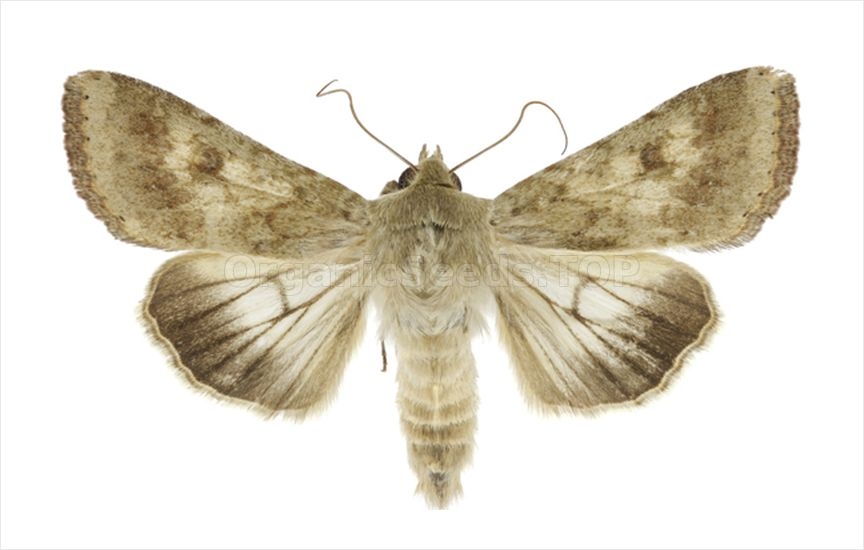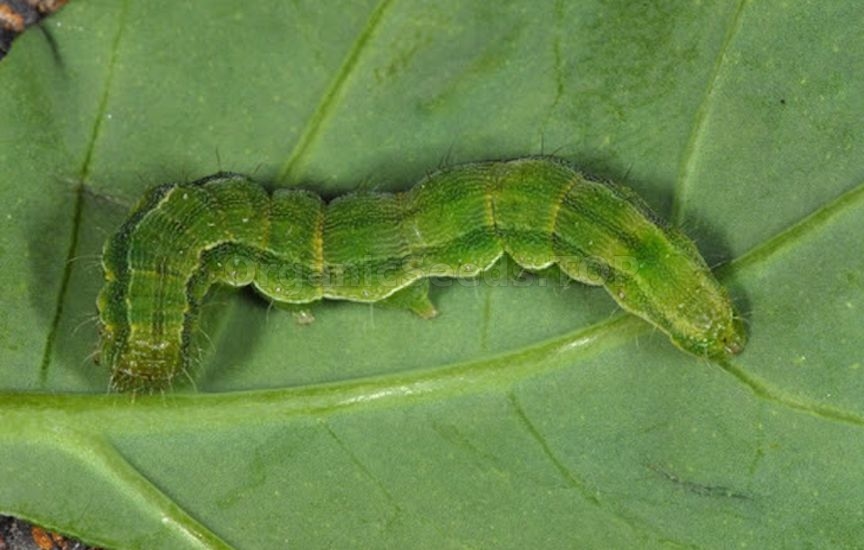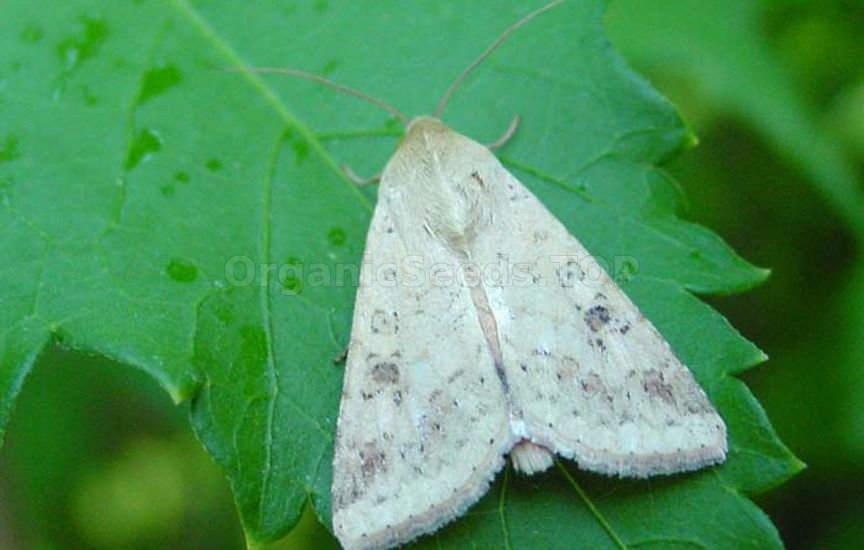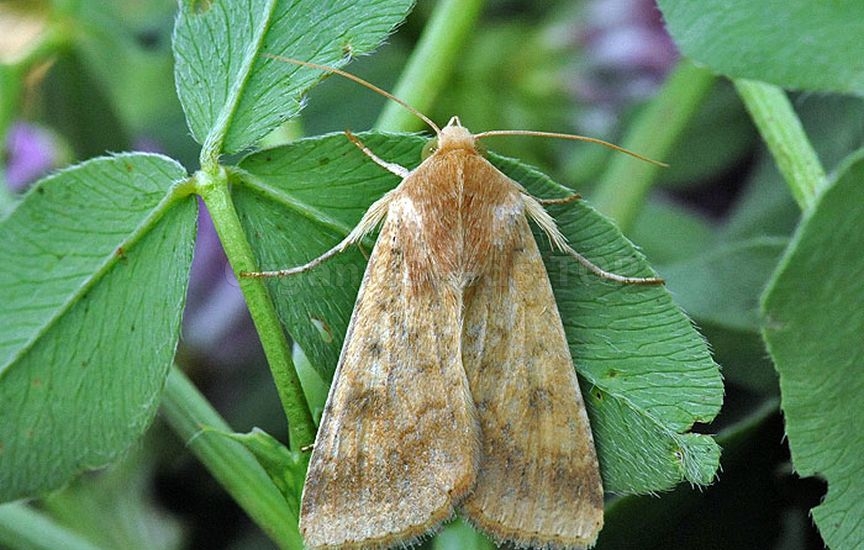Cotton bollworm - «Heliothis armigera» |
 The cotton bollworm - is a dangerous pest, a polyphagous plant. Damaged: corn, cotton, tomatoes, tobacco, chickpeas, sorghum, okra, pumpkin, zucchini, soybeans, castor beans, sesame, hemp, peas, kenaf, jute, rope, alfalfa, peppers, cabbage, beans, onions, peanuts, sunflowers, flax, apple, pear, plum, peach, mango, citrus, geranium, clove, lemon eucalyptus, verbena and some others. Reproduction is bisexual. Development is complete. The pupae overwinter. Depending on the area of location, two to four generations develop. MorphologyImago
A butterfly with a wingspan of 30-40 mm. The front wings are grayish-yellow in color with an admixture of reddish, pink or green shades. Round and kidney-shaped spots are dark gray, inexpressive with indistinct transverse lines. The hind wings are lighter than the front wings. There is a brown stripe at the outer edge, and in the middle there is a dark moon-shaped spot. The forehead is moderately convex with a weak ventral ridge. Tibia of all legs with spikes. The front tibiae are equipped with two rows of spines on the inner and outer sides.  Sexual dimorphism Individuals of different sexes differ in the structure of their genital organs. Secondary sexual characteristics: Female. The color of the wings is darker than that of the male. Male. Fore femur with a number of hard chito-like scales on the inner surface. Egg The egg is light yellow in color, turning green as it develops. Diameter 0.5-0.6 mm. Larva Coloring is variable. Varies from black, brown and green to yellow or white. Three wide dark longitudinal lines can be traced along the body. There is a yellow stripe near the spiracles. There are no spines on the prothoracic shield. The rest of the body is covered with small spines. Length 35-40 mm. Pupa The pupa is reddish-brown in color. The cremaster has two hook-shaped spines. Length 15-22 mm.  DevelopmentImago
Butterfly flight begins at an average daily temperature of 18°C - + 20°C. In the steppe zone, the first butterflies appear in April - early May. In the Polesie zone in mid-June. The flight is extended, lasting a month or more. As a result, one generation overlaps another and lasts until October - November, without interruption. Butterflies are reborn with immature reproductive organs. Adults emerge from the pupae, undergo additional feeding on flowering vegetation, mate and begin laying eggs. Mating period Egg laying is observed 3-4 days after departure. Females lay scattered eggs on generative organs and leaves, one, sometimes two or three. Fertility from 300-500 to 2700 eggs. The place where eggs are laid depends on the type of food plant: in cotton - on leaves, flowers, bracts; in chickpeas and tomatoes - on leaves, buds and flowers; in corn - on cob threads, panicles and pubescent parts of plants. Egg The duration of embryo development depends on the ambient temperature. In summer and spring it lasts 2-5 days, in autumn - 8-10 days, up to 12 days. Larva The larva (caterpillar) develops in 13-22 days, molts five times, and passes through six instars. The optimal development temperature is + 22°C - + 28°C. Young caterpillars skeletonize leaf blades, buds, and young cotton bolls. Older caterpillars eat buds, leaves, ovaries, and gnaw out grains in boxes. Caterpillars also develop on some types of weeds: nightshade, datura, acorn grass and others. Mass reproduction is possible only on crops of cultivated plants. Pupa Caterpillars pupate most often in the soil, sometimes in cotton bolls and corn cobs. In summer, the pupa develops in 10-15 days.  Abiotic factorsThe development of one generation lasts 30-35 days. During the year, from 2 to 4 generations develop, depending on the climatic conditions of the place of residence.
The cotton bollworm is a broad polyphagous plant. Caterpillars are harmful. In Ukraine, feeding on 120 plant species has been observed. The nutrition of more than 350 species of forage plants has been recorded worldwide.
You may need:«Cotton bollworm» trapPheromone trapsGlue trap (single adhesive cardboard) 205x125 mm |
|
|
